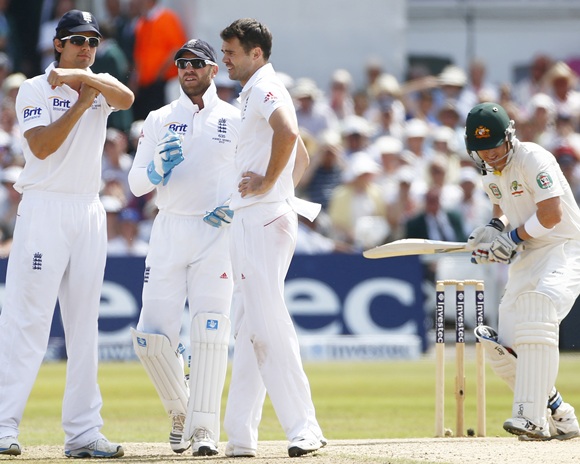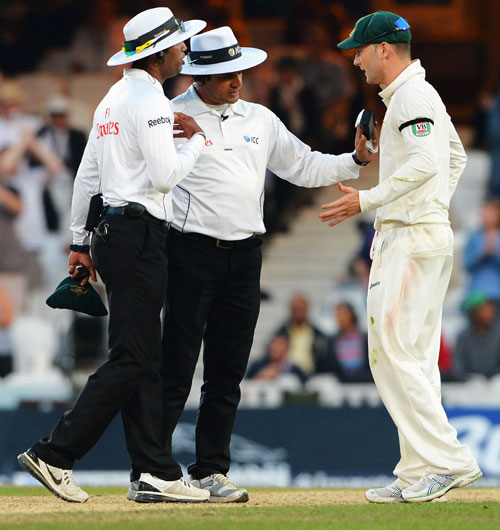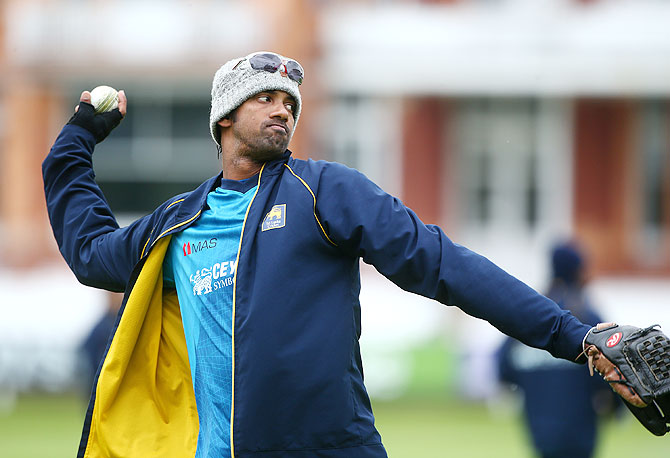 | « Back to article | Print this article |
ICC wants wider use of ORS, check on illegal bowling actions
Run-outs of non-striker batsmen backing up too early, rising instances of confrontation among players, illegal bowling actions and improving the use of technology in umpiring dominated discussion at a two-day meeting of the ICC's cricket committee in Bangalore on Friday.
The committee, headed by former India captain Anil Kumble, deliberated on the major issues facing the game, and came up with suggestions to deal with them.
"The Cricket Committee believes that a non-striker should be deterred from leaving his or her crease before the time the bowler normally delivers the ball," read a statement from the ICC.
"It did not support a formal warning being introduced prior to a bowler being eligible to run-out a non-striker, but it did support the view expressed by some captains that the umpires shouldn't ask the captain whether he wanted the appeal to stand before making a final decision.
"The Law strikes a sensible balance between preventing a batsman from gaining an advantage whilst at the same time preventing the bowler from unfairly seducing the batsman into leaving his crease by faking to deliver and then holding on to the ball," it added.
On the use of technology in umpiring decisions, the committee felt more needs to be done to improve the rate of success.
"One concern related to the checking of No balls on the fall of a wicket, and the delay caused by stopping a dismissed batsman from leaving the field while the replays of the No ball were reviewed," the ICC said.
"The committee was very positive about the Officiating Replay System (ORS) used during the latter stages of the World T20 in Bangladesh, which consists of a dedicated screen and an operator who sits in the TV umpire's room and provides the TV umpire with instant replays from any camera angle.
"This system can be used in either DRS or non-DRS matches, and can help umpires make accurate decisions quickly, particularly boundary and No ball checks," it added.
The committee unanimously supported the expanded use of this system in international cricket, and this recommendation will be considered by the Chief Executives later in June from 22 to 28.
- Please click NEXT for more...
'DRS increased the Correct Decision rate'
The committee also considered the performance of the Decision Review System (DRS) from the technology and TV umpiring errors that occurred during the Ashes in the UK, to some of the noticeable improvements made to the DRS in the second half of the season.
"Overall the use of the DRS increased the Correct Decision rate by 4.4 per cent during the season."
The Cricket Committee was also updated on the deliberations of the Working Group the ICC established to review the use of technology in umpiring.
"It supported one of the strong recommendations from the Working Group, that all technology used in decision-making should be independently evaluated prior to being included on a revised list of technologies approved for use in DRS matches. It was advised that this testing is likely to commence in the second half of 2014."
Kumble said the discussions were fruitful.
- Please click NEXT for more...
Strong action when player behaviour crosses acceptable boundaries
On player behaviour, the committee felt there needs to be better decorum on the field and umpires should not hesitate to act strict. The committee noted an increase in the number of reports made under the Code of Conduct during 2013-14, and encouraged umpires to continue to take strong action when player behaviour crossed acceptable boundaries.
The committee also discussed the balance between bat and ball in international cricket, noting a sharp increase in the number of sixes hit in ODI cricket over the past six months.
"The committee will be keeping a close watch on the performance of cricket bats moving forward. In the short term, the committee was of the strong view that venues must be set-up to their maximum boundary dimensions, having observed a noticeable distance between the rope and the perimeter fence at some international grounds."
- Please click NEXT for more...
ICC cricket committee dwells on menace of suspect actions
Concerned about the growing menace of chucking, the ICC's cricket committee feels the current methods to detect illegal bowling actions are not adequate and umpires should be more confident in reporting violators.
The committee felt more needs to be done to check illegal bowling actions.
The issue of illegal bowling actions came to the fore recently when Sri Lankan off-spinner Sachithra Senanayake was reported for using an illegal action during the series against England.
"The committee discussed the issue of illegal bowling actions, and believed that there are a number of bowlers currently employing suspect actions in international cricket, and that the ICC's reporting and testing procedures are not adequately scrutinising these bowlers," the ICC said.
"It recommended that changes be considered to encourage umpires and referees to identify suspect bowlers with greater confidence, to use the expertise of the biomechanists working in this area to assume a greater role during the assessment process, and to allow for ongoing scrutiny of bowlers once they have been identified under the ICC procedures," it added.
The Chief Executives' Committee (CEC) and ICC Board are scheduled to meet during the ICC annual conference week in Melbourne, from June 22-28.



